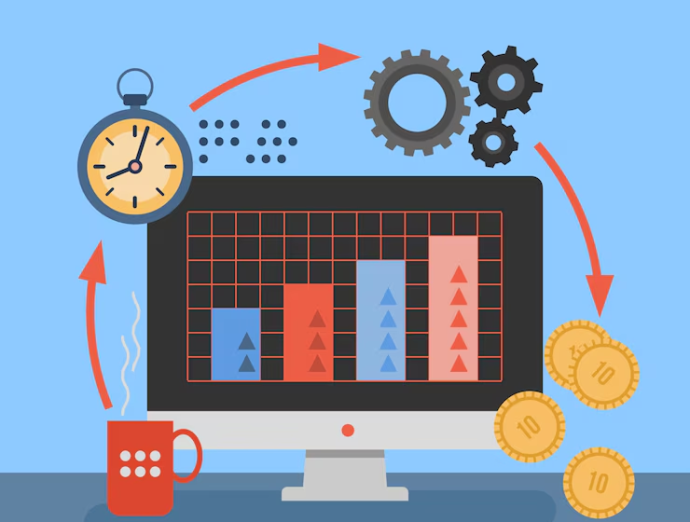Feb 18, 2024 .
By admin
Build or Buy? Choosing the Right Strategy for Your Next Software Project
As businesses grow and evolve, one of the most critical decisions they face is whether to build a custom software solution in-house or buy an off-the-shelf product. This is not just a question of budget; it’s about long-term IT investment strategy, customization, scalability, and fit with your unique business needs.
The Build vs. Buy Dilemma
The Build vs. Buy decision is one of the most complex choices faced by organizations of all sizes. Whether it’s a new platform, enterprise software, or a custom mobile app, understanding the benefits and limitations of both options is key to making the right call.
Let’s dive into both approaches and see how each aligns with modern business needs and digital transformation goals.

Building Custom Software: Tailored Solutions for Your Needs
Building custom software involves creating a solution from scratch or customizing an existing platform to
meet your specific requirements. This approach allows for full control, customization, and flexibility.
Pros of Building Custom Software:
- Complete Customization: You get a product designed specifically to meet your exact business processes, workflows, and unique requirements. The software will scale with your organization as you grow, offering a better fit for your needs.
- Greater Control and Flexibility: Custom software provides complete control over the features and functionality. You’re free to make updates, integrate new features, and ensure that the software adapts to future changes in your business strategy.
- Competitive Advantage: With a bespoke solution, you gain a competitive edge by offering unique capabilities that off-the-shelf software can’t provide. This can help differentiate your business in a crowded market.
- Long-Term ROI:Though the initial investment may be higher, a custom-built solution can yield greater long-term benefits by aligning with your company’s goals and evolving alongside your needs.
Cons of Building Custom Software:
- Higher Initial Cost: The cost of development, especially for larger or more complex systems, can be significantly higher than purchasing a pre-built solution. Custom software development requires dedicated resources, time, and expertise.
- Longer Development Time: Custom software takes time to design, develop, test, and deploy. Depending on the scope of your project, this can stretch over several months or even years.
- Ongoing Maintenance: Once the solution is built, you need to invest in ongoing maintenance, updates, and support. This can add to your long-term IT costs and requires dedicated teams to manage the system.


Buying Off-the-Shelf Software: Quick, Cost-Effective, and Ready-to-Use
Pros of Buying Software:
- Faster Deployment: Off-the-shelf software can typically be deployed and integrated into your business operations almost immediately. This allows your company to quickly leverage new software and start seeing results.
- Lower Initial Investment: Ready-made solutions usually come at a lower initial cost compared to custom-built software, which may make it more accessible for businesses with limited budgets or tight deadlines.
- Proven Reliability: Off-the-shelf software has typically been tested by many other users, which can reduce the risk of bugs, errors, and other issues. With established products, there is often a robust support structure in place, as well as regular updates and patches.
- Maintenance and Support: Buying software often comes with vendor-provided maintenance and support services. You don’t have to worry about managing updates, troubleshooting issues, or ensuring uptime your vendor handles that.
Cons of Buying Software:
- Limited Customization: Off-the-shelf solutions are designed to serve a broad range of customers, which means they may not fully align with your specific business needs. Customization can be limited, and adding features or integrations may require additional development or workarounds.
- Lack of Flexibility: With off-the-shelf software, you’re bound by the product’s existing features and updates. If your needs change or evolve, you may have to adapt your business processes to fit the limitations of the software.
- Hidden Costs: While the initial cost might be lower, there can be hidden costs down the line such as licensing fees, upgrade costs, and vendor lock-in which could make the software more expensive in the long term.
- Integration Issues:Off-the-shelf software may not seamlessly integrate with your existing systems, requiring additional work to ensure compatibility with your IT infrastructure. This could result in disruptions and delays.
When to Build:
Building a custom software solution is ideal when:
- Your business requires unique functionality that no off-the-shelf software can provide.
- You’re working on a long-term strategic project that will evolve and grow over time.
- You need the flexibility to integrate with other proprietary systems or third-party tools.
- You’re aiming for a competitive edge by offering a product or service that’s not available elsewhere.
When to Buy:
Buying off-the-shelf software is best when:
- You need a quick solution for an immediate business need or problem.
- You’re working on a project with limited resources or tight timelines.
- The available software closely matches your business processes and goals.
- You require a solution that’s easy to maintain and doesn’t need constant customization.
The Hybrid Approach: Build and Buy Together
In some cases, the best approach might not be Build vs. Buy but rather Build and Buy. A hybrid model
allows businesses to leverage existing off-the-shelf software for foundational systems (e.g., accounting, CRM, ERP) while building custom software for core features that set the business apart.
For example, you could buy an ERP system and build a custom analytics dashboard that integrates with your data, providing a unique way to understand customer behavior or operational performance.
Real-World Example: A Financial Services Firm
A leading financial services firm was struggling with outdated manual processes that delayed the
generation of key reports. They explored the option of buying a reporting tool but found that none met their specific needs for integrating with existing internal systems.
Solution:
They decided to build a custom reporting solution, combining elements of off-the-shelf tools with
tailored features to address their specific reporting requirements. This provided the firm with a unique,
scalable solution that saved hours of manual work and improved data accuracy.
The Final Verdict: Build or Buy?
The decision to build or buy software comes down to understanding your unique business needs, budget
constraints, and long-term goals. There’s no one-size-fits-all approach, and the best choice will depend
on the specifics of your project. For some companies, building custom software is the key to creating a
tailored solution that drives long-term growth, while for others, buying off-the-shelf software can be afaster, more cost-effective way to address immediate needs.
If you’re still unsure, working with an experienced partner can provide invaluable guidance. With the right expertise, you can determine the best path forward and ensure your software investment sets your
business up for long-term success.
Looking for Expert Guidance?
If you’re planning your next software project and need help choosing between building or buying, contact us to discuss how our full-cycle development services can support your business in making the right
decision.
